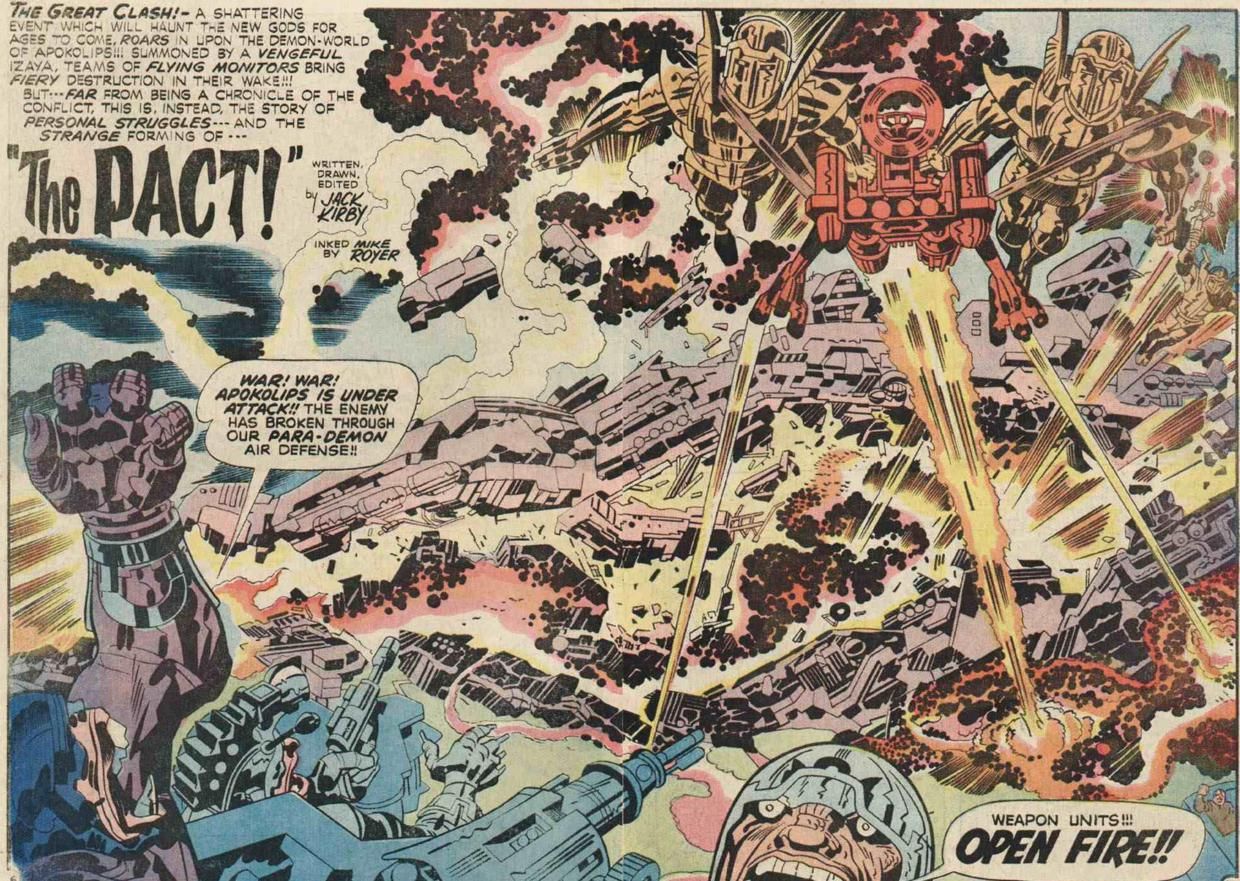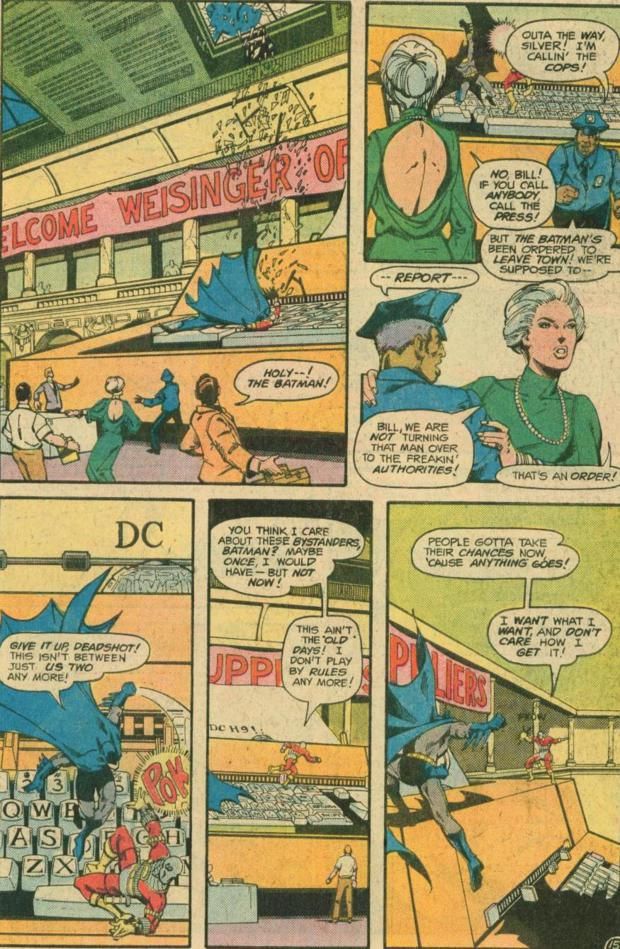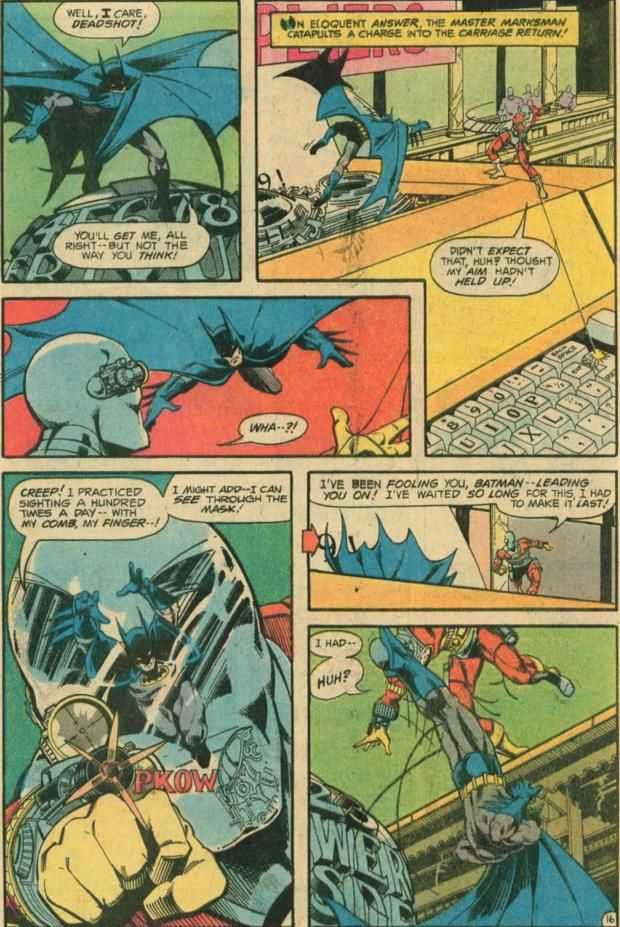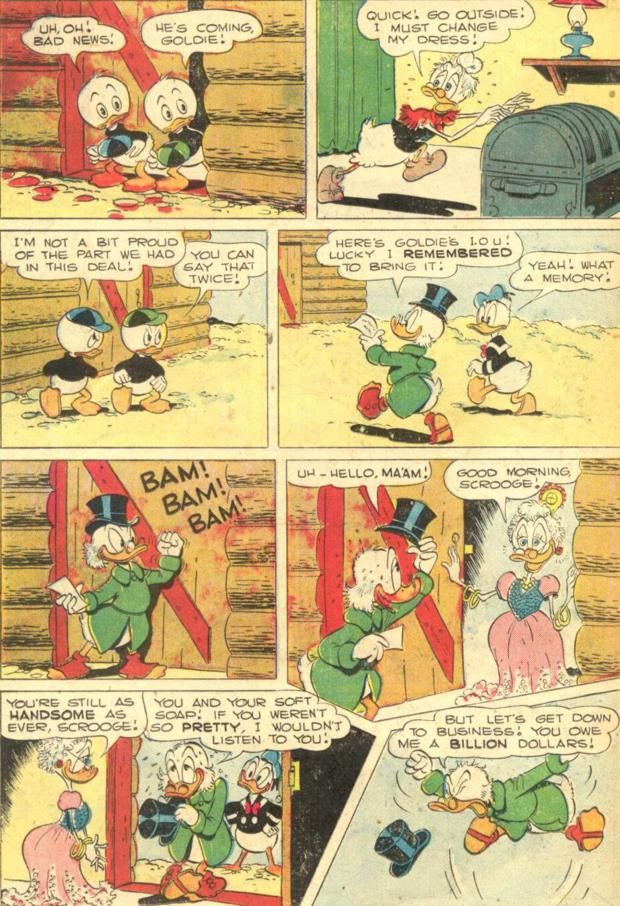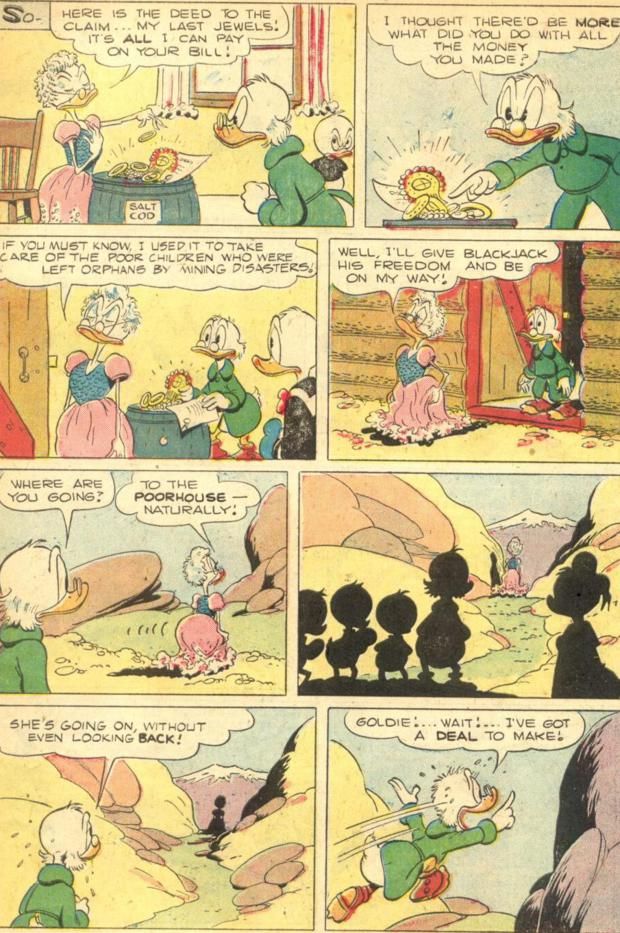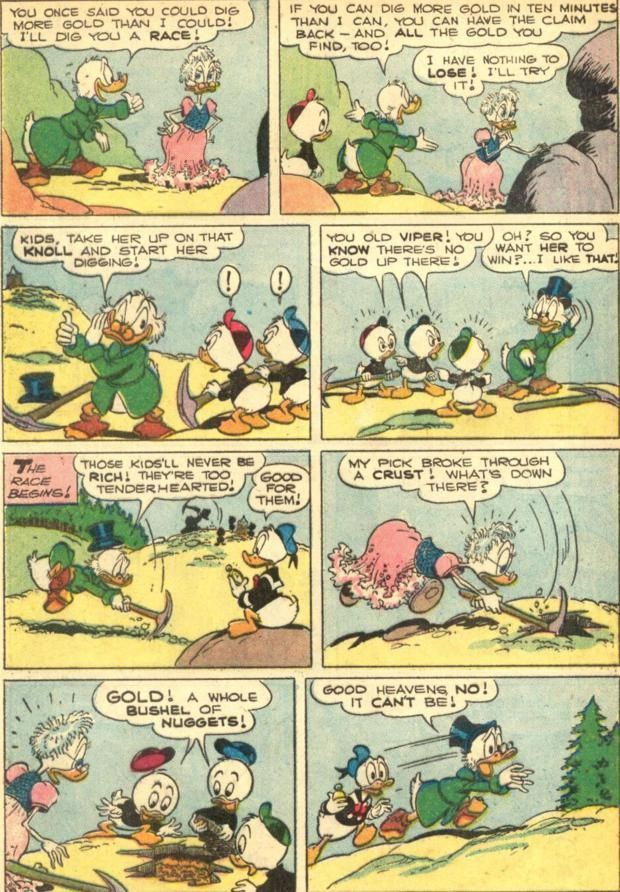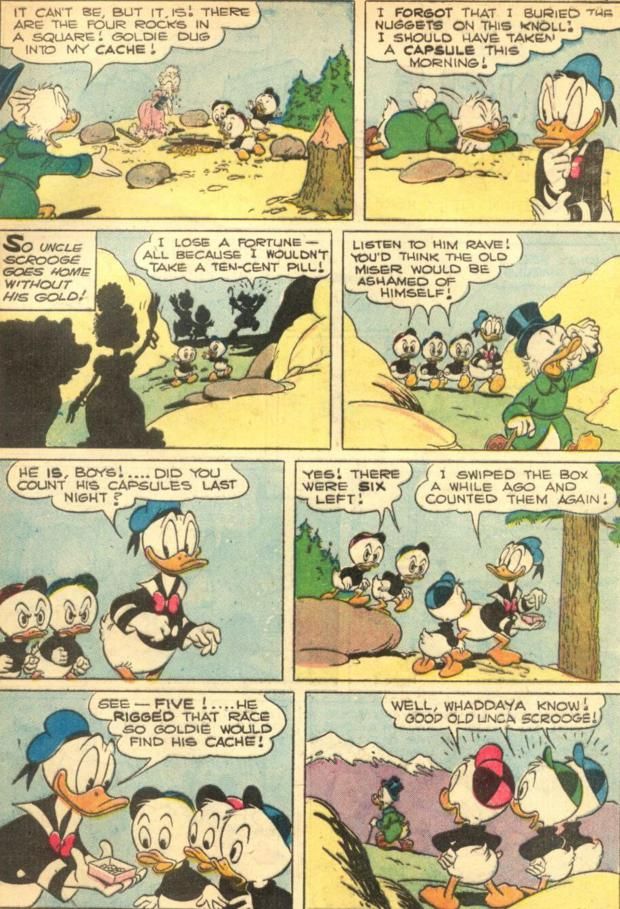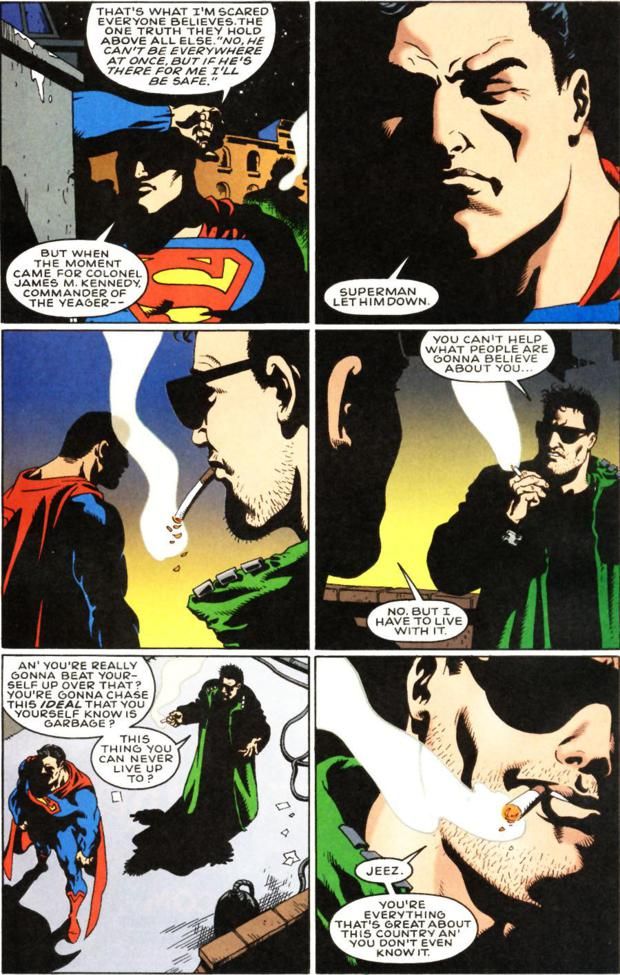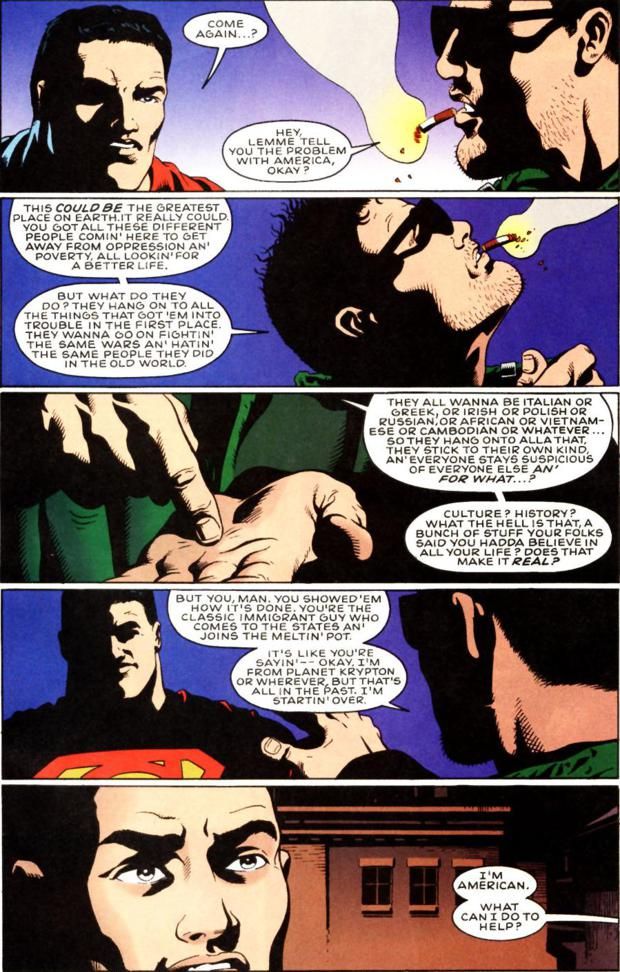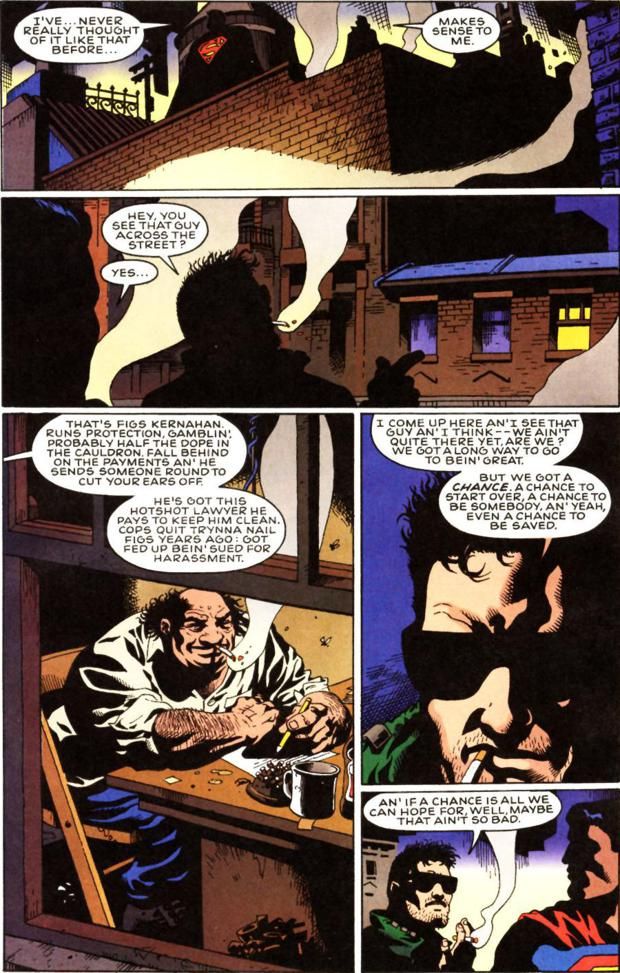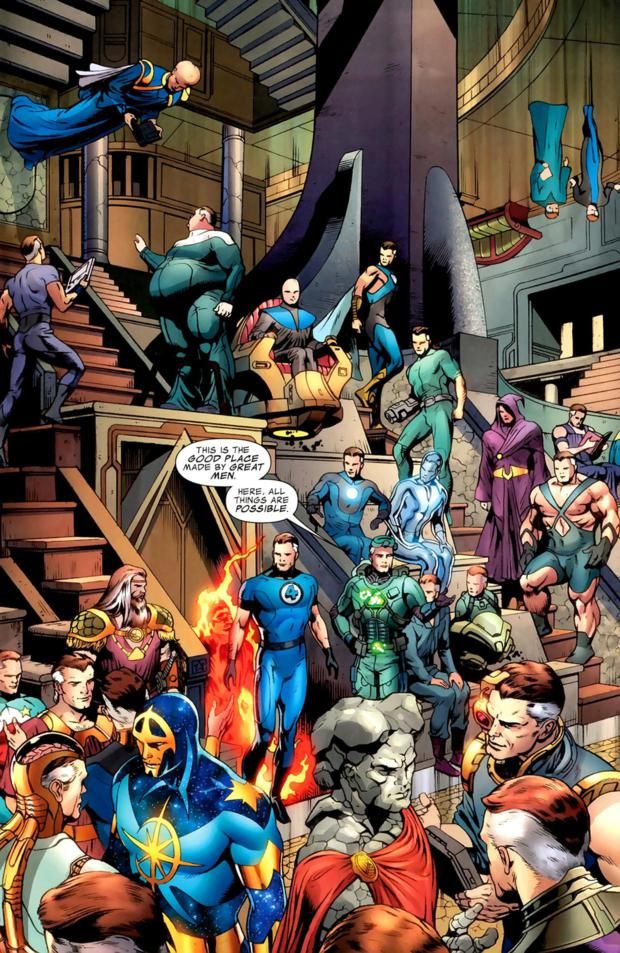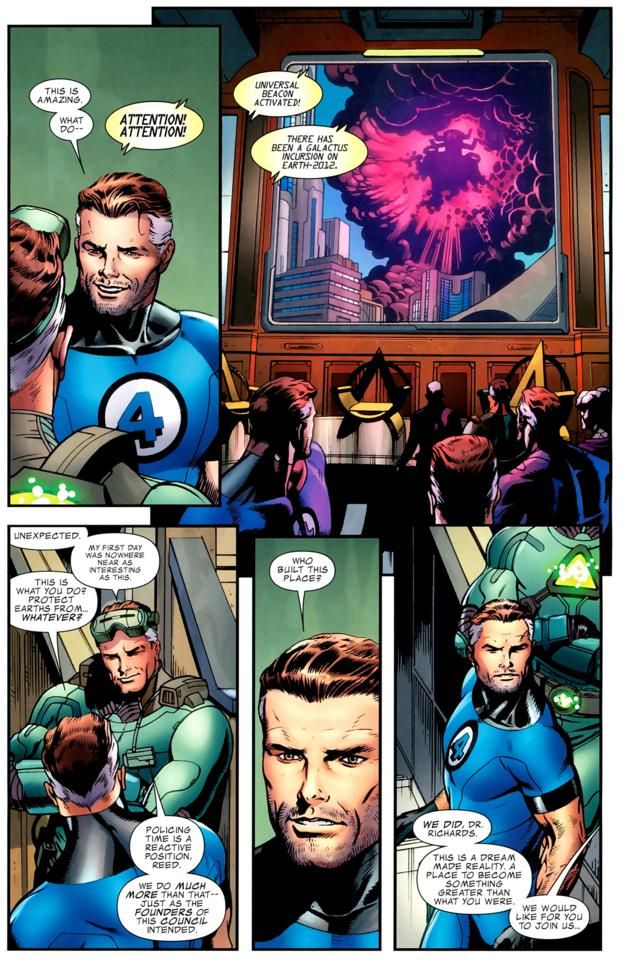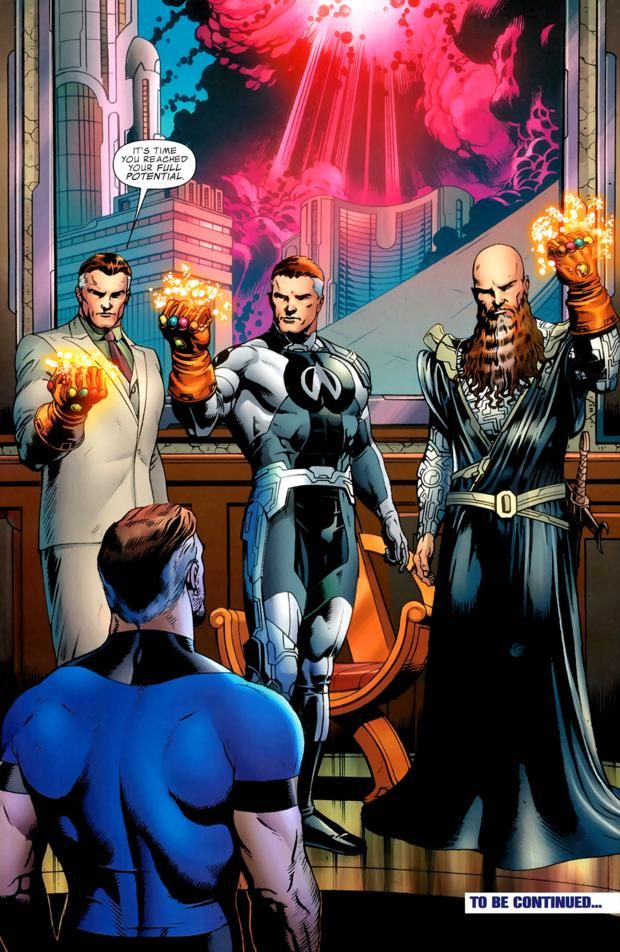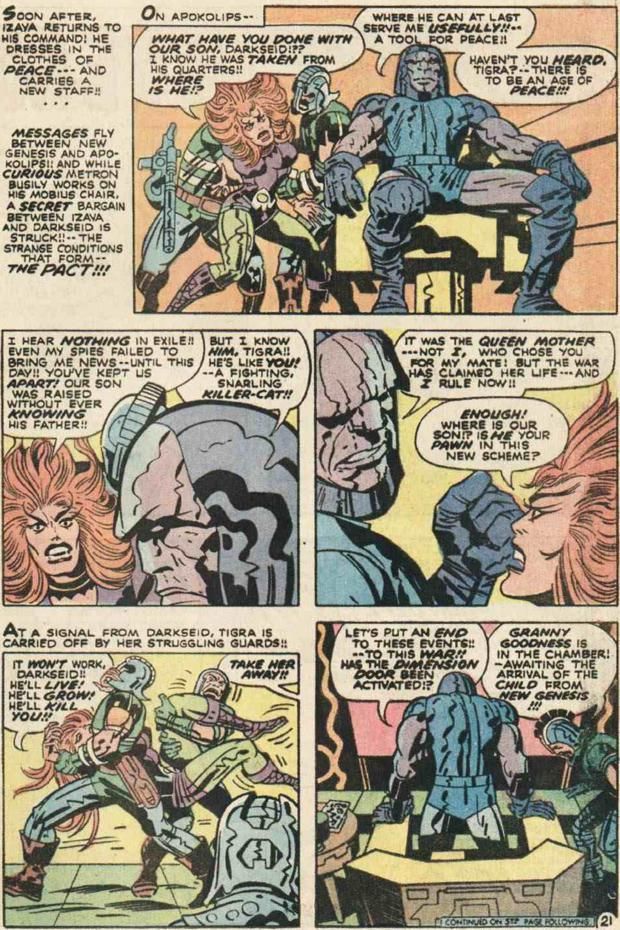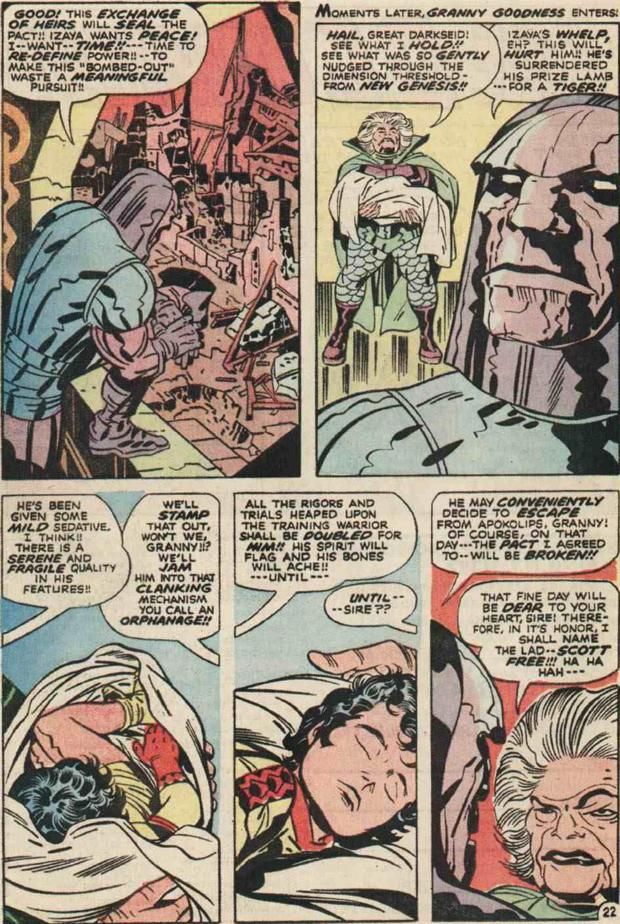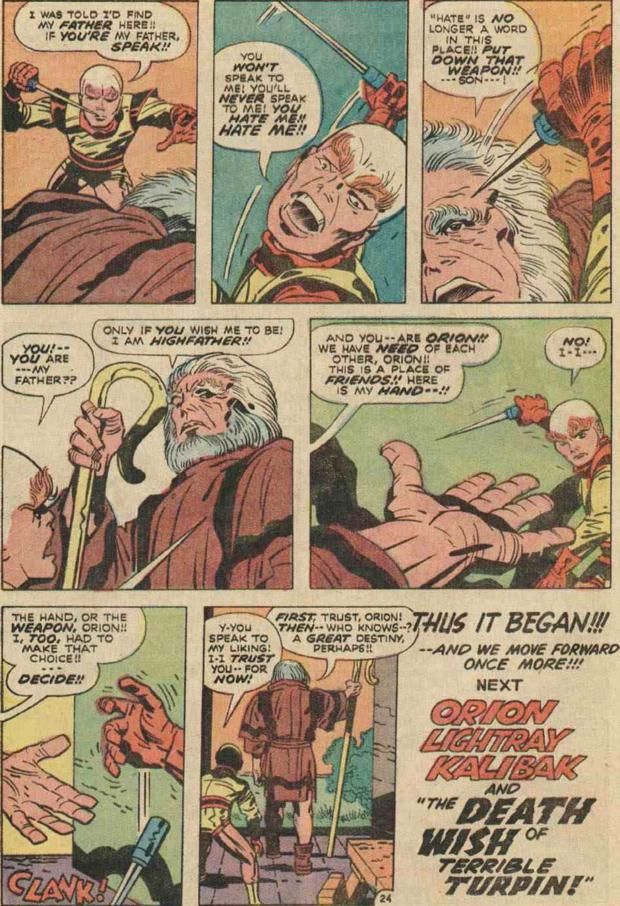You voted, now here are the results of your votes for your favorite comic book creator runs of all-time! We'll be revealing five runs a day for most of the month. Here is a master list of all of the runs revealed so far.
Here's the next five runs...
55. Steve Englehart and Marshall Rogers’ Detective Comics – 161 points (3 first place votes)
Detective Comics #469-479
For whatever reason, Steve Englehart decided to leave Marvel in the late 70s, and quickly found work at DC, which was totally fine with taking on one of Marvel's most prominent writers. Englehart began an acclaimed run on Justice League of America, and an equally acclaimed run on Detective Comics, with issue #469.
Initially working with Walter Simonson but ultimately with Marshall Rogers, Englehart's Batman run was in many ways based on a similar structure to Jeph Loeb's later Hush series, in that Englehart tried to work in as many major Batman villains into his story as he could, including re-introducing two early Batman foes that had fallen into disuse. Both of the villains, Hugo Strange and Deadshot, were rejuvenated by Englehart's useage and later went on to prominent appearances in later stories. Deadshot, in particular, was an extremely minor villain that saw his coolness factor shoot up 736% percent when Marshall Rogers gave him one of the coolest costumes you ever will see (years later, it was that cool costume that piqued John Ostrander's interest and got Deadshot a spot on the Suicide Squad).
Englehart had a good Penguin story, he had a good story involving Robin (he wanted at least one issue to involve Robin) and in the Laughing Fish, he had one of the best Joker stories of all-time (the Joker tries to get a federal trademark on fish that he has altered to have his Joker grin).
Englehart introduced a crime boss named Rupert Thorne who became a notable part of the Bat-mythos, as well as Silver St. Cloud, one of the best love interests Batman has ever had.
In one issue, Englehart even did some metafictional stuff by having Batman fight Deadshot on giant typewriters (evoking the 1950's Batman comics) and in the fight, Silver makes a realization that few people ever had before...
Rogers stayed on the book for three more issues as Len Wein came in to wrap up any loose ends from Engelhart's run, including writing Silver out of the book (people have mostly treated Silver St. Cloud as Englehart's baby, and usually only he writes her). Wein and Rogers also introduced a new Clayface.
Englehart and Rogers would return to Batman for an acclaimed sequel to their run in 2005, Batman: Dark Detective. Tragically, Rogers died in 2007.
54. Carl Barks' Duck comics – 167 points (1 first place vote)
A variety of Walt Disney comics from 1943 through 1972, most notably Uncle Scrooge #1-71
A lot of voters went for just "Duck comics" for Carl Barks, which I guess is fair enough, as that's really what Barks did. From 1943 until he stopped working regularly as a comic book creator in the early 1970s, pretty much every month would have a new Carl Barks written and drawn story.
However, a nice chunk of voters specified Barks' Uncle Scrooge comics, and I think it would have been just as fair to call this run "Carl Barks' Uncle Scrooge" (I actually did call it that for a little while) as his Uncle Scrooge work is certainly his most personal work, as Uncle Scrooge is his own creation (Barks introduced him in a Donald Duck Christmas story in the late 1940s). His Uncle Scrooge stories were also later adapted into the hit Disney cartoon series Duck Tales. Uncle Scrooge is the world's richest duck but he is also a cantakerous old coot who occasionally has a heart that matches the gold in his money bin.
What was so amazing about Barks' work was not only the fact that he was a wonderfully skilled artist (he was a born storyteller and the amount of characterization he could get across while working with talking DUCKS is astonishing) but that his stories had such a great DEPTH to them. Kids would not only be entertained by his fun stories, but they would LEARN things about different parts of the world and about world history and myths. Barks has a voracious appetite for knowledge and he expressed this appetite in his stories.
Not only that, but Barks also had an impressive ability to tell complex stories about the human...er...duck condition, like with the amazing Back to the Klondike. Uncle Scrooge has been taking memory pills (he does not take them too often as they cost ten cents apiece so he doesn't want to be wasteful) and suddenly he remembered an old adventure he had gone on in the Klondike with an old sort of girlfriend, Glitterin' Goldie. He heads to the Klondike to recoup the money he knows she owes him and once there, they go on a series of adventures trying to find her and once they DO find her, Scrooge's nephews (Huey, Dewey and Louie, who Barks used to great effect in his stories, especially the Boy Scout-like group they belonged to, the Junior Woodchucks) regret the fact that Scrooge is going to take this nice old woman for all she has got. Or is he?
Legendary.
Just like Carl Barks.
53. Garth Ennis and John McCrea’s Hitman – 168 points (1 first place vote)
Hitman #1-60, plus a #1,000,000 and an Annual
The old saying goes, when you're given a bunch of lemons, make lemonade!
Well, fifteen years ago, Garth Ennis and John McCrea were given a bunch of lemons, and they made Hitman.
Hitman was introduced as part of a storyline where the writers of each DC title would introduce a brand-new character in the Annual that year (oddly enough, Marvel did the same thing that same year), all of whom would have the shared origin of being bit by aliens whose bite, if it does not kill you, gives you strange powers. Most of these new characters disappeared faster than you could say Adam-X, the X-Treme, but Hitman, who debuted in the pages of Ennis and McCrea's The Demon Annual, was the notable exception.
Tommy Monaghan. was just your typical, run of the mill hitmen, until the aliens gave him powers, and now Tommy was a SUPER-POWERED Hitman, with X-ray vision and telepathy.
With his powers, Tommy had a new confidence, and then decided to specialize in killing superpowered targets, the types most other hitmen would never attempt, due to the danger. Despite the bizarre nature of Tommy's targets, Ennis really downplayed his superpowers, and played up the friendship between Tommy and the people of his Gotham neighborhood, "The Cauldron," a place so bad that when No Man's Land happened, no one noticed anything different in the Cauldron!
Most of the action in the series centered around Sean Noonan's bar, where Tommy and his partner and best friend, Natt, hung out in with other hitmen, such as Ringo Chen and Hacken. Often visiting the bar was the drunk Sixpack, who was a superhero of sorts himself, leading the bizarre Section 8 (this is where Dogwelder came from).
The series was filled with hilariously bizarre storylines, like the one where Tommy and his friends have to take down an aquarium that was filled with zombie animals. However, the series was ALSO filled with dramatic scenes of friendship, particularly between Tommy and Natt.
There is a classic issue where Superman comes across Tommy during a hit (Superman does not realize that is why Tommy is on a rooftop), and the pair chat for the whole issue, and it is a wonderful tribute to superheroes from a writer, Ennis, who is not usually too fond of superheroes.
In the story, Superman is rattled because while he was saving a group of astronauts before the nuclear core of their shuttle exploded he noticed that one of the astronauts that they said had died trying to repair the shuttle was actually still alive. The core explodes, though, before Superman can save him. This does not sit well with Superman...
Impressive.
Ennis and McCrea worked on the book for five years, and they finished it in a wonderfully poetic final issue.
A few years back, Ennis and McCrea reunited to tell an "untold tale" of Tommy and the JLA, and it was awesome.
52. Jonathan Hickman’s FF – 171 points (3 first place votes)
Fantastic Four #570-611, FF #1-23
Jonathan Hickman burst onto the Fantastic Four "scene" with an impressive opening. Reed Richards meets "The Council," a group of Reed Richards from throughout the Multiverse...
However, our Reed Richards is special. He has something that these other Reeds doesn't have. He still has a conscience.
It's a brilliant observation by Hickman that what makes Reed so special is not his great intelligence, but rather the fact that he is surrounded by a family that grounds him and prevents him from ever becoming the mad scientist he very easily could become. They make sure he has a conscience.
One of the fascinating aspects of Hickman's Fantastic Four run is how calculated the whole thing is. Hickman is a complex thinker and his run has been carefully planned out. In his early issues, the Fantastic Four slowly encounter a growing group of brilliant young minds. After the Human Torch was seemingly killed off, Reed Richards decides to form the Future Foundation, a group where he can help mold these young minds into helping the world. A Council of his very own, but one guided by good intentions and not ego.
Meanwhile, Hickman also has made sure to put new spins on a variety of classic Fantastic Four concepts and characters. Galactus, the Inhumans, the Kree, Atlanstic, Black Panther, the Wizard, if they were a part of the classic Jack Kirby/Stan Lee Fantastic Four run, they've been addressed and given an interesting new spin by Hickman.
Dale Eaglesham was the original artist on Hickman's run. Then Steve Epting joined for the "death" of the Human Torch and the launch of the Future Foundation. After the Fantastic Four returned (with the return of the Human Torch), Epting went with the Fantastic Four but a number of artists have done arcs on Fantastic Four since then. FF, meanwhile, was taken over by first Juan Bobillo and then Nick Dragotta.
His run on both books has just come to a close and he left a very impressive legacy in these past three years.
51. Jack Kirby’s Fourth World – 176 points (2 first place votes)
Superman's Pal Jimmy Olsen #133-148, New Gods #1-11, Forever People #1-11 and Mister Miracle #1-18
In 1970, when Jack Kirby left Marvel for DC, he brought with him his plans for the Fourth World, which was an entire line of comics that Kirby had envisioned which would, when finished, could be repackaged as collected works.
To introduce this new line of comics, Kirby took over as writer/artist on Superman's Pal, Jimmy Olsen, where the battles of the Fourth World were first seen. In Olsen, Kirby first showed the world the evil power of Darkseid, who was the ruler of an awful planet called Apokolips, which was caught in a ancient war with a nice planet called New Genesis.
Darkseid's main goal was to retrieve the Anti-Life Equation, which would allow him to control all living beings.
Their war had been stalled for many a year by a pact done decades before where Darkseid and Highfather, the leader of New Genesis, swapped sons. Highfather raised Orion, while Darkseid "raised" Scott Free. When Scott escaped Apokolips (all according to Darkseid's plan), Darkseid had reason to restart the war.
This Pact was detailed in a classic issue of New Gods that established that this was not your typical superhero story, in the sense that Kirby was actually going to fill us in on all of the vast mythology of the series...
However, Darkseid had not planned that Orion would be "tamed" enough by Highfather to be ready to oppose Darkseid's plans.
These rip-roaring adventure yarns filled with over-the-top plots and larger-than-life characters were told through three main titles, New Gods (which starred Orion, mostly), Mister Miracle (which was the name Scott Free took when he escaped to Earth, as he became the world's greatest escape artist) and the Forever People, who were a gang of young New Gods who had wacky adventures - but could merge into the powerful Infinity Man if need be.
The books were a ton of fun, but sales were not particularly great, and each title was canceled. Kirby wrapped up all the plotlines, and then went to work on other DC titles.
Years later, Kirby was given the chance to wrap up the stories in The Hunger Dogs, but DC seems to just ignore that story, as Darkseid has become a major part of the DC Universe now, as has Mister Miracle and Orion.

